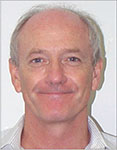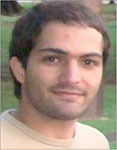Active monitoring of hydraulic fracture propagation: an experimental and numerical study
Amin Nabipour A , Brian Evans A and Mohammad Sarmadivaleh ACurtin University of Technology
The APPEA Journal 51(1) 479-486 https://doi.org/10.1071/AJ10031
Published: 2011
Abstract
Hydraulic fracturing is known as one of the most common stimulation techniques performed in oil and gas wells for maximising hydrocarbon production. It is a complex procedure due to numerous influencing factors associated with it. As a result, hydraulic fracturing monitoring techniques are used to determine the real-time extent of the induced fracture and to prevent unwanted events. Although the well-known method of monitoring is the microseismic method, active monitoring of a hydraulic fracture has shown capable of providing useful information about the fracture properties in both laboratory conditions and field operations.
In this study, the focus is on laboratory experiment of hydraulic fracturing using a true-triaxial cell capable of simulating field conditions required for hydraulic fracturing. By injecting high-pressure fluid, a hydraulic fracture was induced inside a 20 cm cube of cement. Using a pair of ultrasonic transducers, transmission data were recorded before and during the test. Both cases of an open and closed hydraulic fracture were investigated. Then, using a discrete particle scheme, seismic monitoring of the hydraulic fracture was numerically modelled for a hexagonally packed sample and compared with the lab results.
The results show good agreements with data in the literature. As the hydraulic fracture crosses the transducers line, signal dispersion was observed in the compressional wave data. A decrease was observed in both the amplitude and velocity of the waves. This can be used as an indicator of the hydraulic fracture width. As the fracture closes by reducing fluid pressure, a sensible increase occurred in the amplitude of the transmitted waves while the travel time showed no detectable variations. The numerical model produced similar results. As the modelled hydraulic fracture reached the source-receiver line, both amplitude and velocity of the transmitted waves decreased. This provides hope for the future real-time ability to monitor the growth of induced fractures during the fraccing operation. At present, however, it still needs improvements to be calibrated with experimental results.

Amin is a PhD candidate in the Department of Petroleum Engineering at Curtin University, Perth. His research focuses on numerical and experimental ultrasonic monitoring of fracture propagation. He received his bachelor of science in mining engineering from Isfahan University of Technology (IUT) in 2006 with a thesis focused on the drilling bit performance in horizontal drilling. In addition, he holds a master of petroleum well engineering from Curtin University of Technology and a master of science in petroleum production and drilling engineering from Petroleum University of Technology (PUT), Tehran (2008). In his master's thesis, he conducted a research on the stress analysis of cement sheath using finite element method (FEM). Amin.Nabipour@postgrad.curtin.edu.au |

Professor Brian Evans is head of the Department of Petroleum Engineering at Curtin University. He graduated as an electrical engineer but has worded as a mud logger, seismic surveyor, rig location specialist and an operations geophysicist. He was CEO of an exploration consultancy before joining academia to take a Masters and PhD at Curtin University. He is author of the SEG text book Handbook for Seismic Exploration, and leader of the due diligence teams for Gorgon Phase 1 and Phase 2 projects. He has authored over 150 journal papers, and his present research interests include all forms of unconventional gas, CO2 phase behaviour and time-lapse 3D seismic. Member: SPE. Board member: MERIWA. Vice Chairman: SPE Australia Council. B.Evans@curtin.edu.au |

Mohammad Sarmadivaleh is a PhD candidate at Curtin University of Technology, Perth. He is working on a numerical and experimental study of the Interaction of an induced hydraulic fracture with a natural interface. Mohammad holds a bachelor of science in petroleum engineering (reservoir engineering), a master of science in drilling and production engineering from Petroleum University of Technology (PUT), Iran and a master of engineering in petroleum well engineering from Curtin University of Technology. Mohammad.Sarmadivaleh@postgrad.curtin.edu.au |


